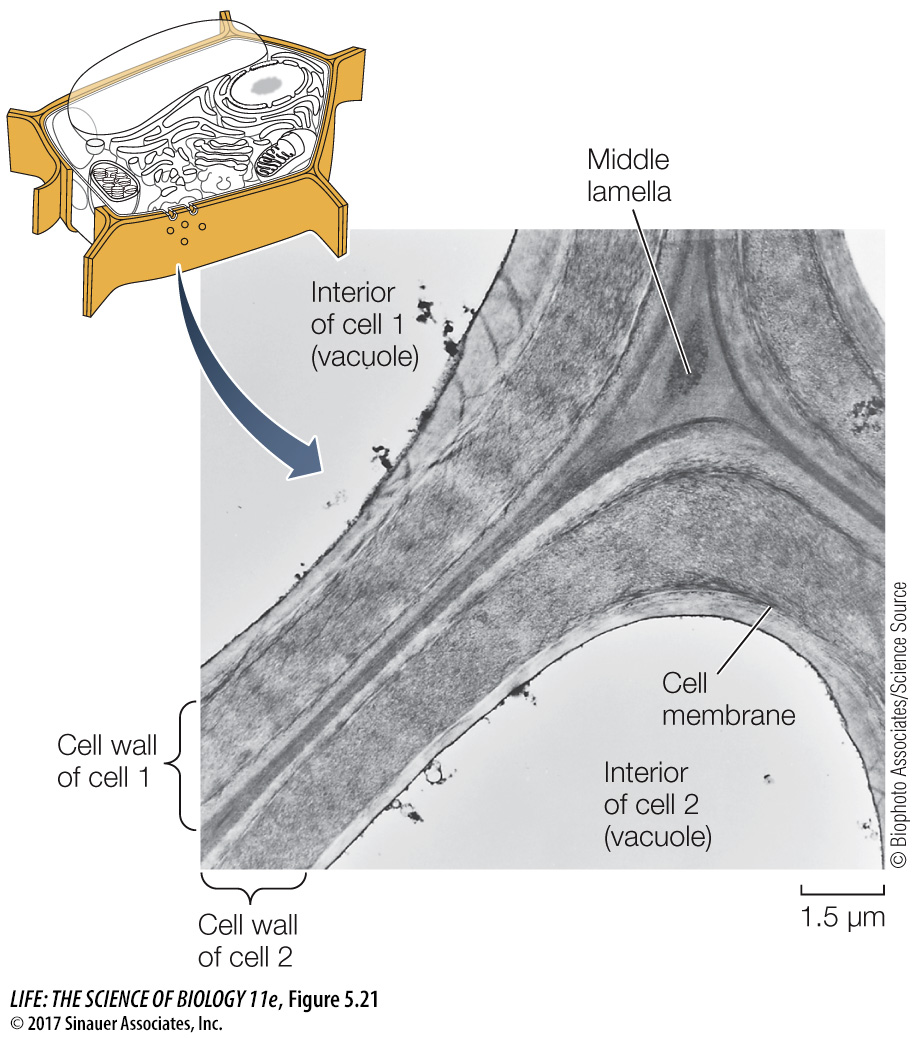What is the plant cell wall?
The plant cell wall is a semirigid structure outside the cell membrane (Figure 5.21). We will consider the structure and role of the cell wall in more detail in Chapter 33. For now, we note that it consists of cellulose fibers (see Figure 3.18) embedded in other complex polysaccharides and proteins. The plant cell wall has three major roles:
It provides support for the cell and plant by remaining rigid. Yet it is flexible enough that it can allow the plant to bend in the wind, for example.
It acts as a barrier to infection by fungi and other organisms that can cause plant diseases.
It contributes to plant form by growing as the plant cells expand.

In some cells, such as those in a leaf, the cell wall is porous to allow the passage of molecules into and out of the cell. In other cells, such as those of the plant’s vascular system (which transports water and small molecules between organs), the wall is not porous.
Because of their thick cell walls, plant cells viewed under a light microscope appear to be entirely isolated from one another. But electron microscopy reveals that this is not the case. The cytoplasms of adjacent plant cells are connected by numerous cell membrane–